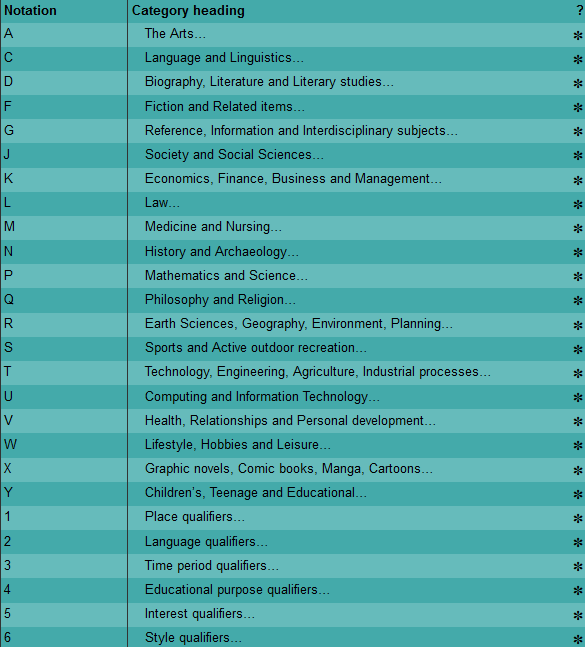Short and sweet: THEMA is a system used for categorizing books by their subject matter. Like Book Industry Standards and Communications (BISAC) or Book Industry Communication (BIC), THEMA codes classify book subjects, making the process of classifying titles simpler. Unlike BISAC or BIC, these codes are not solely used in a specific region like Europe or North America. Due to THEMA being a multilingual system, it can be utilized on an international level.
Why are THEMA codes so important? With them, books are more easily classified and grouped together. Think of it like this; you’re shopping online for some new books to add to your TBR. You’re in the mood for love, so you select the romance section. Instead of seeing Funny Story by Emily Henry or Not In Love by Ali Hazelwood, You Like It Darker by Stephen King is front and center on your screen. While these titles are similar in the fact that they are fiction, Emily Henry and Stephen King books are vastly different. THEMA codes help prevent the mislabeling of books by referring to the theme, going beyond the general genre. As an author or publisher, mislabeling a book is a big deal.
THEMA may not be important to know for readers, but it definitely matters for professionals in the book trade. Publishers are able to use THEMA to better communicate with retailers or business brokers for physical and digital books. Having book titles in the wrong category prevents them from being discovered by their target audience. The overall purpose of THEMA is to boost promotion and discoverability. In other words, THEMA is all about marketing.
So what do THEMA codes look like? The codes will of course depend on the book’s subject matter or theme. There are nearly three thousand subject categories and one thousand shared qualifiers currently. Subject categories and qualifiers are combined to clarify the code’s meaning. There are a number of category headings to select from, followed by subcategories. The headings start off broad then become more specific as the subcategories are selected.
To simplify things let’s use Thorn City by Pamela Statz as an example. Using the THEMA chart we would start with the basics. Thorn City is in the genre of fiction, which gives us the letter F. In the subcategories under fiction we would select “thriller/suspense fiction,” which gives us FH. Another example we can use is Jason Tanamor’s Love, Dance & Egg Rolls. This title falls under the young adult category, so we would select Y for the “children’s, teenage, and educational” category heading. To specify it a bit more we could select “personal and social topics” (YX). Love, Dance & Egg Rolls themes include a number of topics we could incorporate into the code, but for the sake of simplicity we’ll go with “coming-of-age” giving us the code YXW.
It may seem complex initially, but THEMA has helped make book categorization a cohesive and universal process. Due to BISAC and BIC codes being used only in specific regions, THEMA has become the suggested substitute to replace them. Knowing your book’s THEMA code now will aid in preventing headaches from having to ultimately make the update in the future, as the standard method shifts away from BISAC codes. The global connection using THEMA is a great benefit to publishers when it comes to marketing. Another major bonus to THEMA is that it is regularly updated. New subject codes are added consistently, which only improves the categorization process, breaking down book themes even more specifically.To find more information on THEMA, check out this video from Editeur.org.
Written by DJ Borden.

